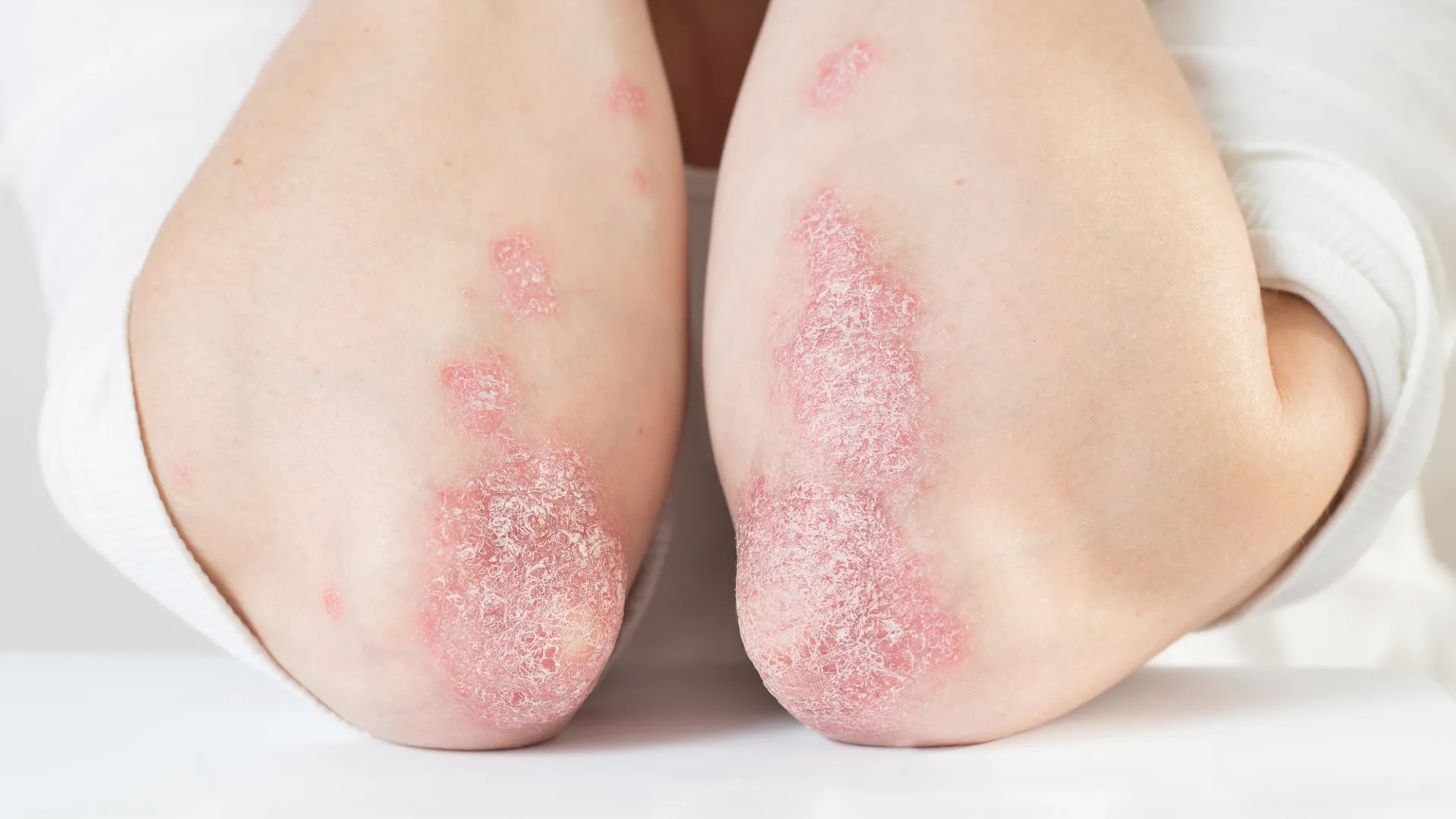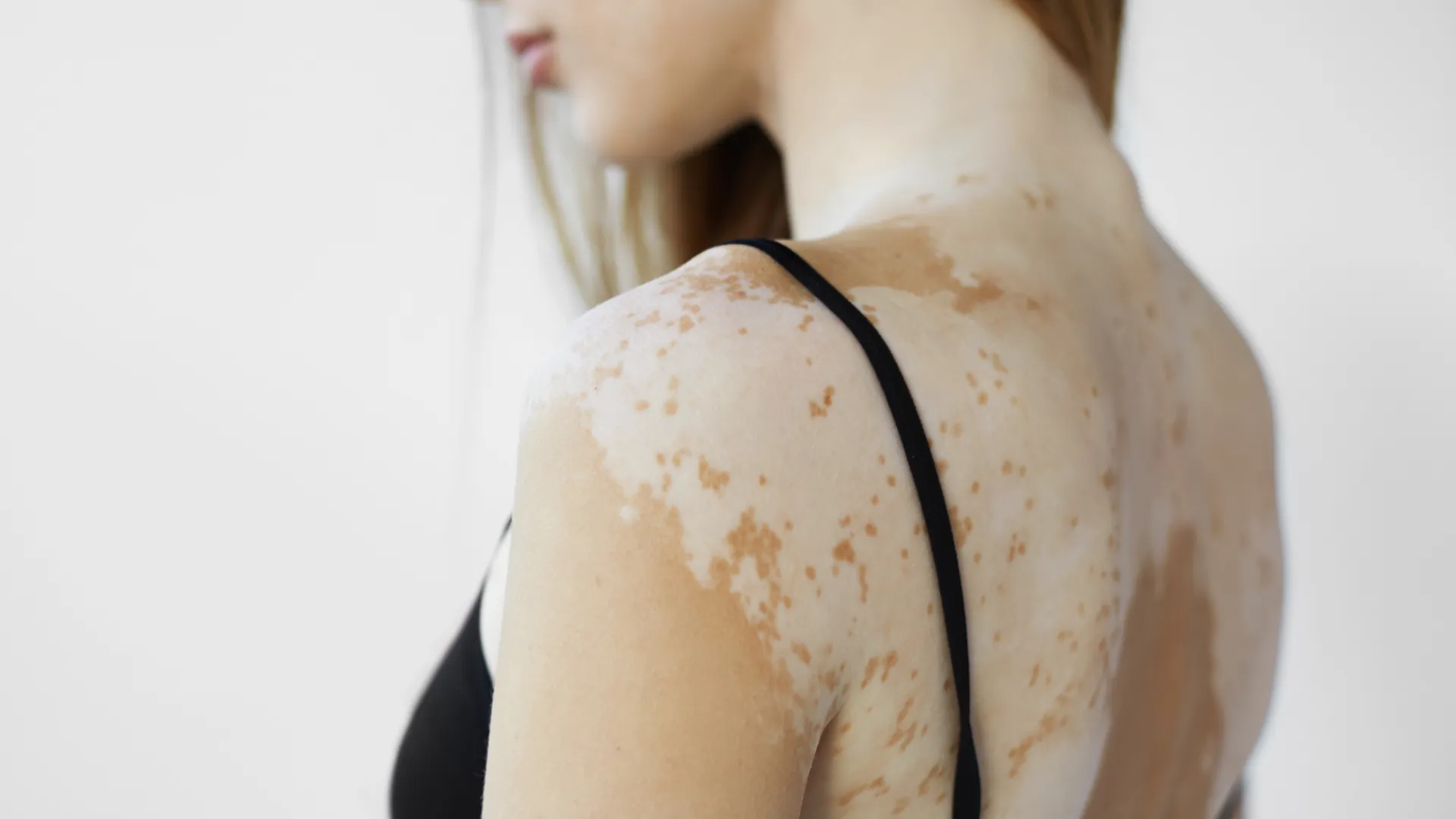Psoriasis
Psoriasis is a chronic inflammatory skin condition that affects approximately 3% of the general population and occurs equally in men and women. It is characterized by flare-ups and remissions. It can affect individuals of all ages, but it most commonly appears in the second to third decade of life or between the ages of 50-70.
It is important to note that psoriasis is non-contagious and is influenced by genetic and environmental factors. Studies indicate that about one-third of patients have a first-degree relative who also suffers from psoriasis.
Triggering factors
- Infections (particularly streptococcal respiratory infections)
- Medications
- Metabolic disorders
- Skin injuries
- Hormonal factors
- Stress
- Smoking and alcohol (which increase the risk of developing the disease)
Approximately 60-70% of patients report significant itching.
Types of psoriasis
- Plaque psoriasis: The most common form (80%). It is characterized by red plaques covered with thick, silvery scales. Lesions are primarily located on the elbows, knees, lower back and scalp. It usually does not affect the face, except for the hairline.
- Guttate psoriasis: Represents less than 10% of cases. Typically appears in children or young adults following a respiratory infection. It is characterized by small, scattered plaques and has a good prognosis.
- Erythrodermic psoriasis: The most severe and rare form, with generalized inflammation and systemic symptoms (fever, malaise). It requires immediate medical intervention.
- Pustular psoriasis: Occurring in less than 5% of cases, it is characterized by the appearance of pustules. There are localized forms (affecting palms and soles) and generalized forms.
- Inverse psoriasis: Affects body folds and is more common in older individuals. Characterized by erythematous plaques with little to no scaling.
- Psoriatic nail disease: Affects about 50% of patients with plaque psoriasis and can sometimes be the only manifestation of the disease.
- Psoriatic arthritis: Appears in 15-20% of psoriasis patients, causing inflammation and pain in the joints.
Comorbidities
Psoriasis has been associated with:
- Hypertension
- Diabetes
- Cardiovascular diseases
- Metabolic syndrome
- Autoimmune diseases
- Inflammatory bowel diseases
- Psychiatric disorders and depression
- Obesity
Psoriasis is a systemic disease that can affect the quality of life and the life expectancy of patients.
Diagnosis
Diagnosis is primarily clinical. In some cases, a skin biopsy may be required.
Treatment
Psoriasis is a chronic condition that requires a personalized and multifaceted approach to treatment. The choice of treatment depends on the type and severity of psoriasis, as well as the individual needs of the patient.
Topical Treatment
Either as monotherapy for a limited number of lesions or as adjunctive therapy with other treatments. Primarily corticosteroids, vitamin D derivatives (calcipotriene, calcitriol), emollients and keratolytics are used.
Phototherapy
Exposure to ultraviolet radiation.
- UVB: Uses UVB radiation, effective in reducing inflammatory lesions. Typically used 2-3 times a week.
- PUVA: Combines the use of a photosensitizing drug (psoralen) with UVA exposure. More effective for severe cases but requires caution due to potential side effects.
Systemic Therapy
Methotrexate, cyclosporine, or acitretin can be administered. These treatments require regular monitoring and laboratory checks due to frequent side effects.
Biologics
Biologic agents have emerged as a revolutionary option for the treatment of psoriasis. They are used for severe forms of psoriasis that do not respond to other treatments or when the disease significantly impacts the patient’s quality of life. They have high efficacy with a good safety profile. Complete laboratory testing is required before administration and regular monitoring of the patient is essential. Some biologics have approval for use in children and adolescents.
Small Molecules
Apremilast is a phosphodiesterase 4 (PDE4) inhibitor. It is used for the treatment of moderate to severe plaque psoriasis and psoriatic arthritis. It is easy to administer, has good safety and acts quickly, making it a good choice for patients who prefer non-injectable therapy.




